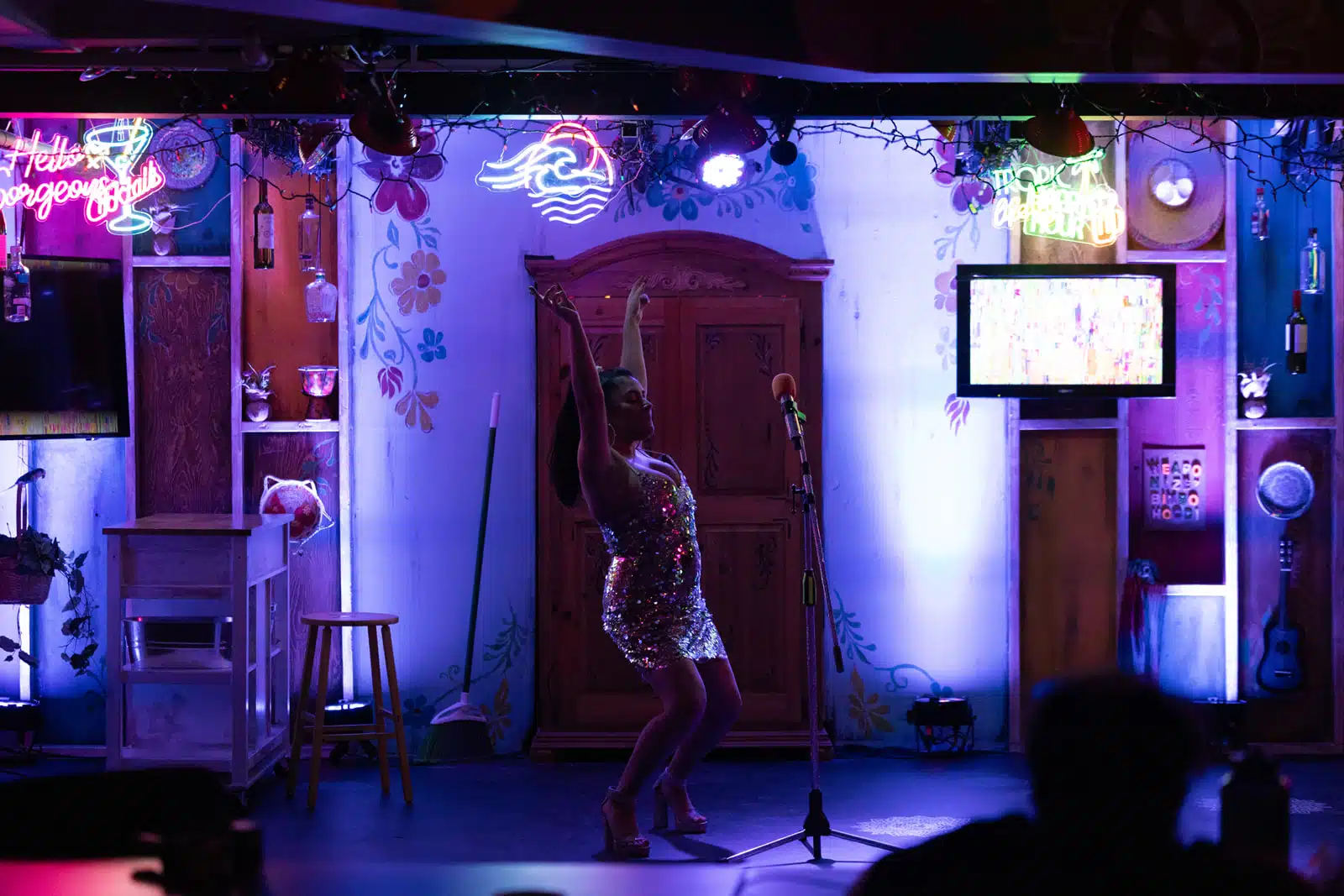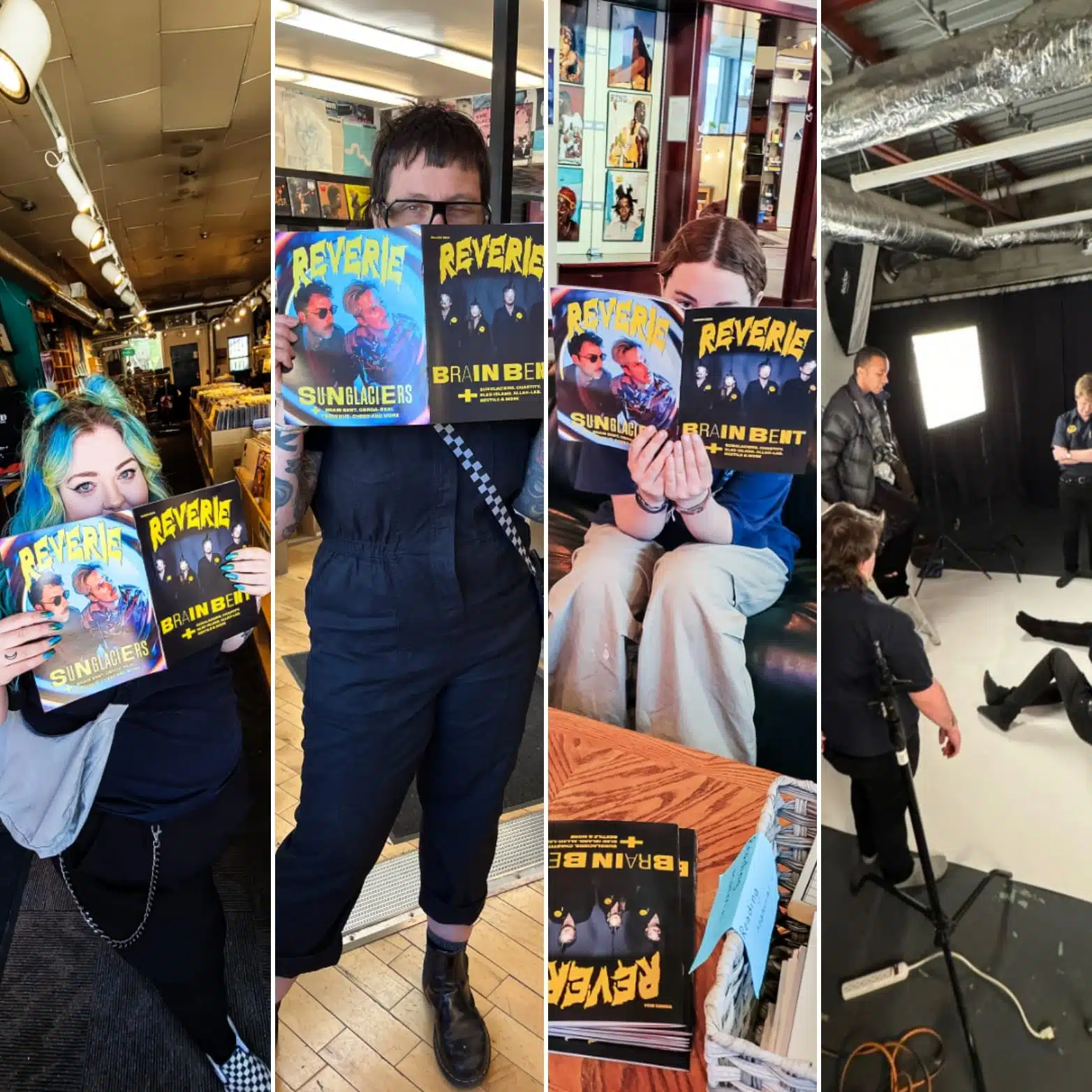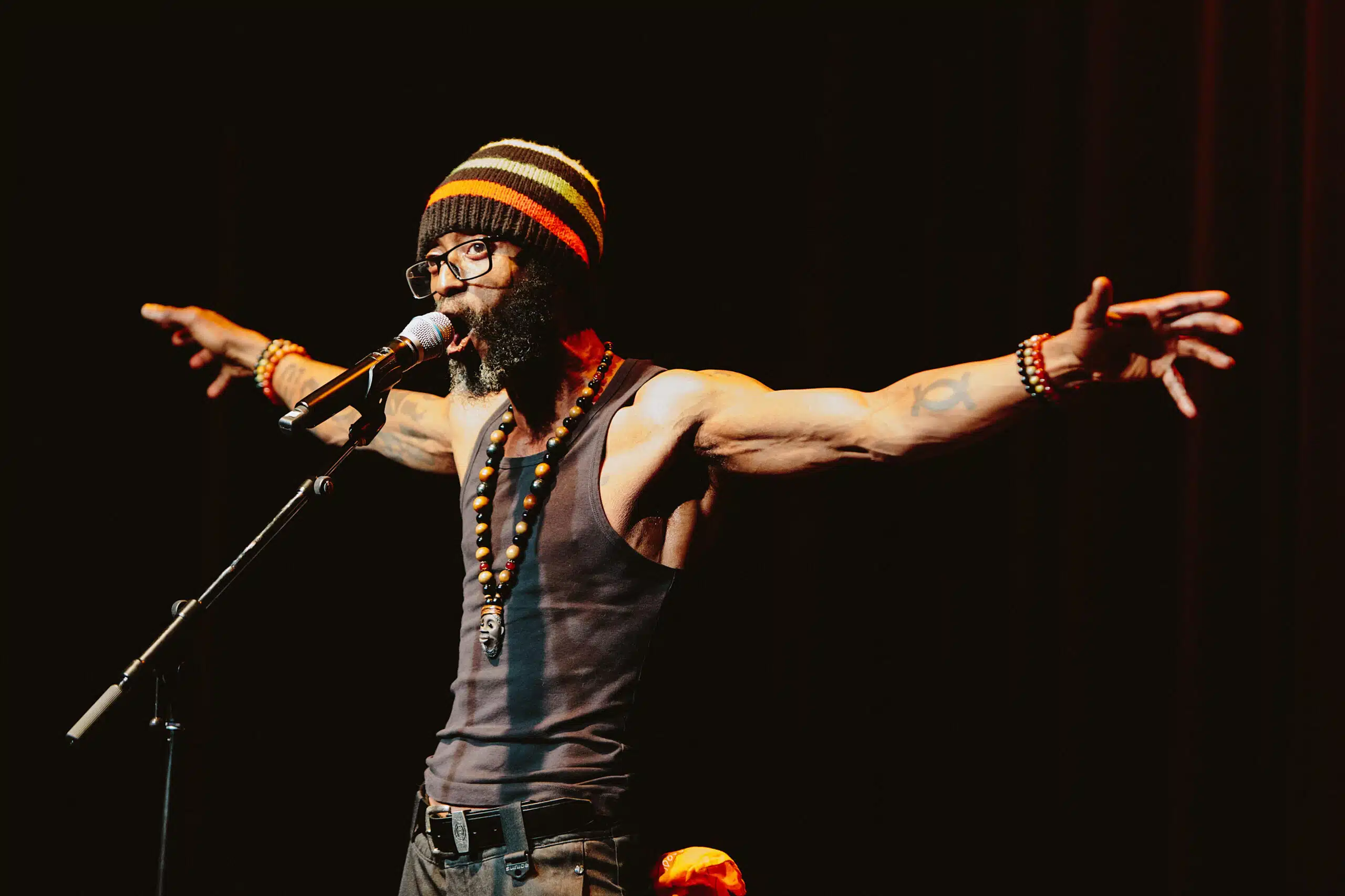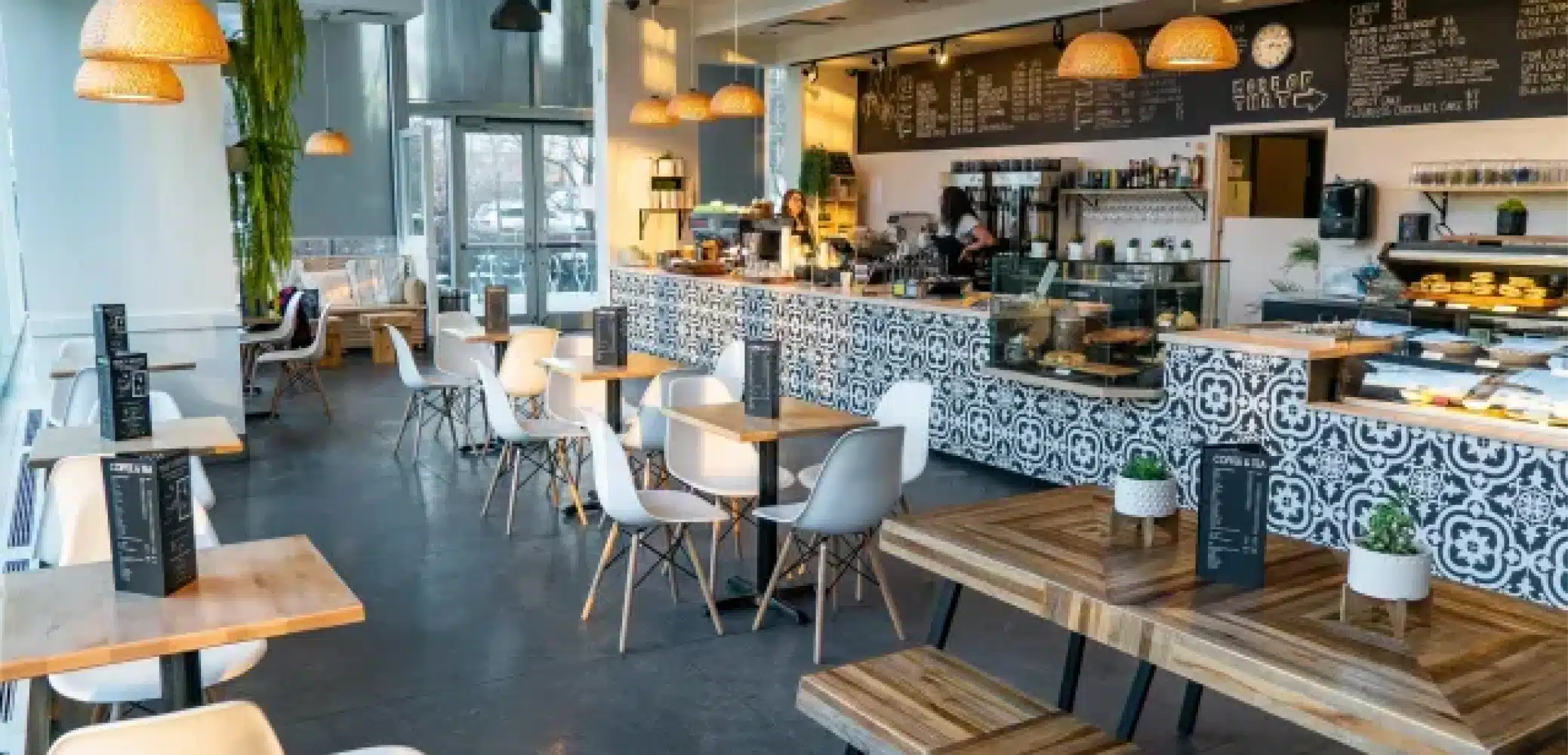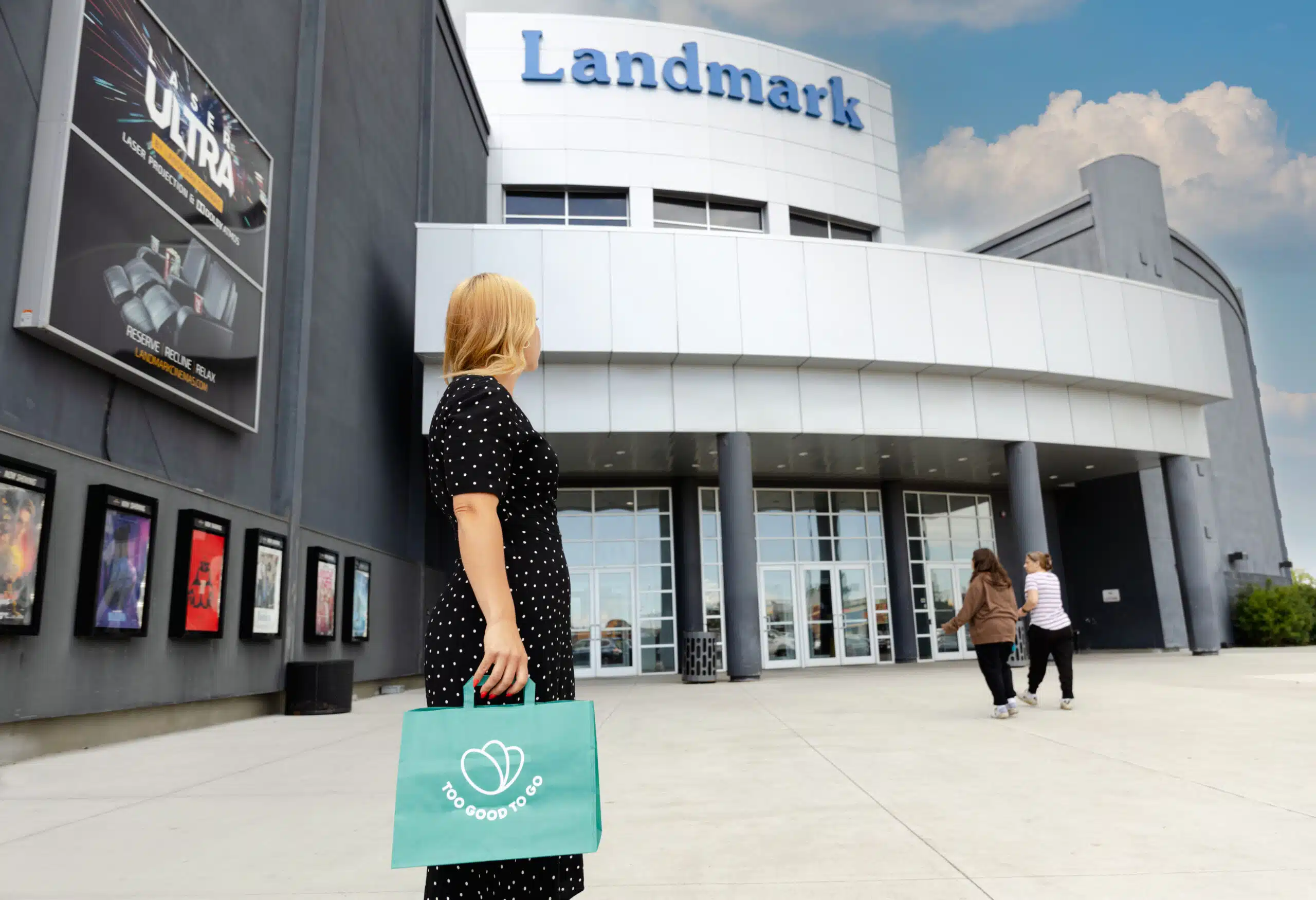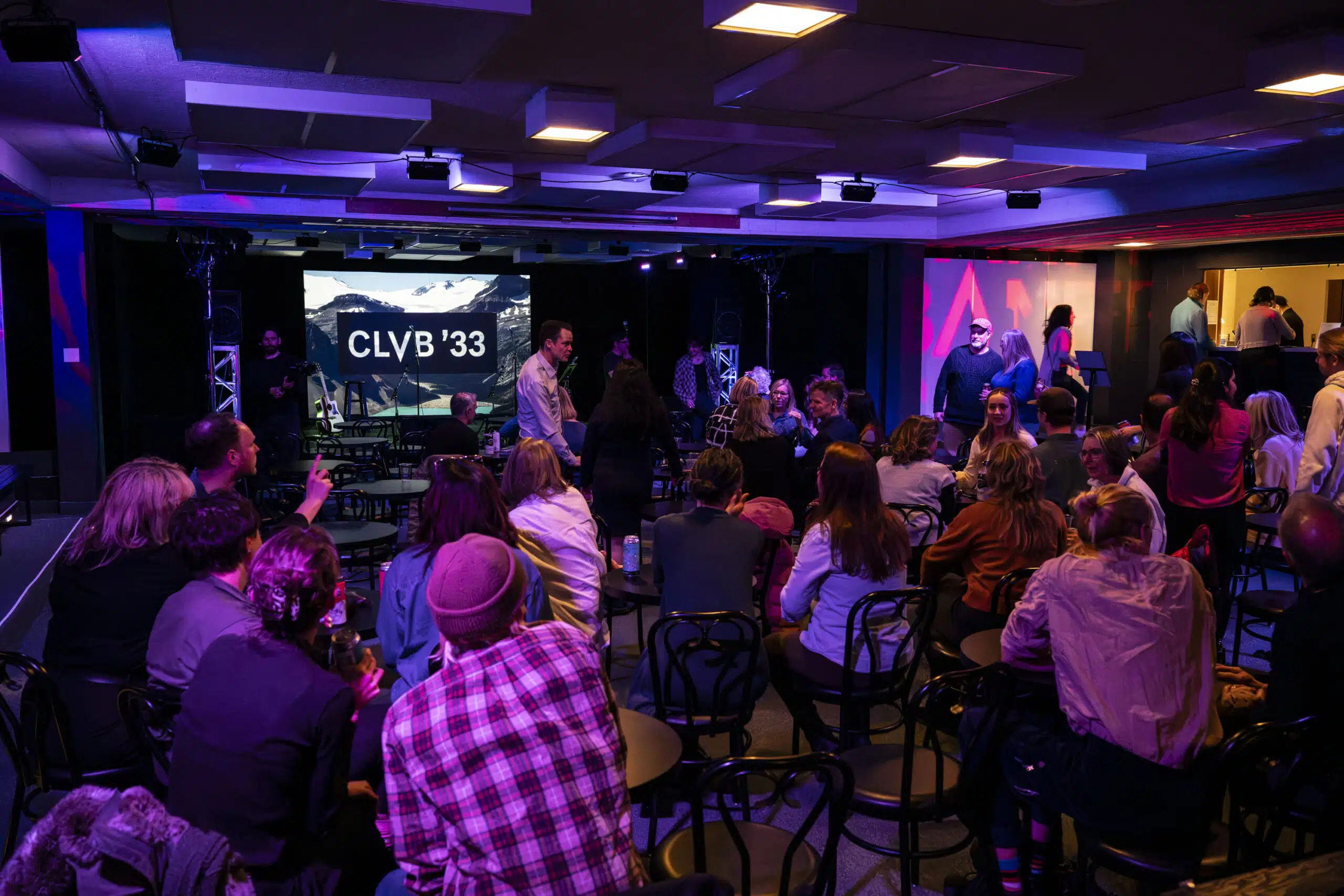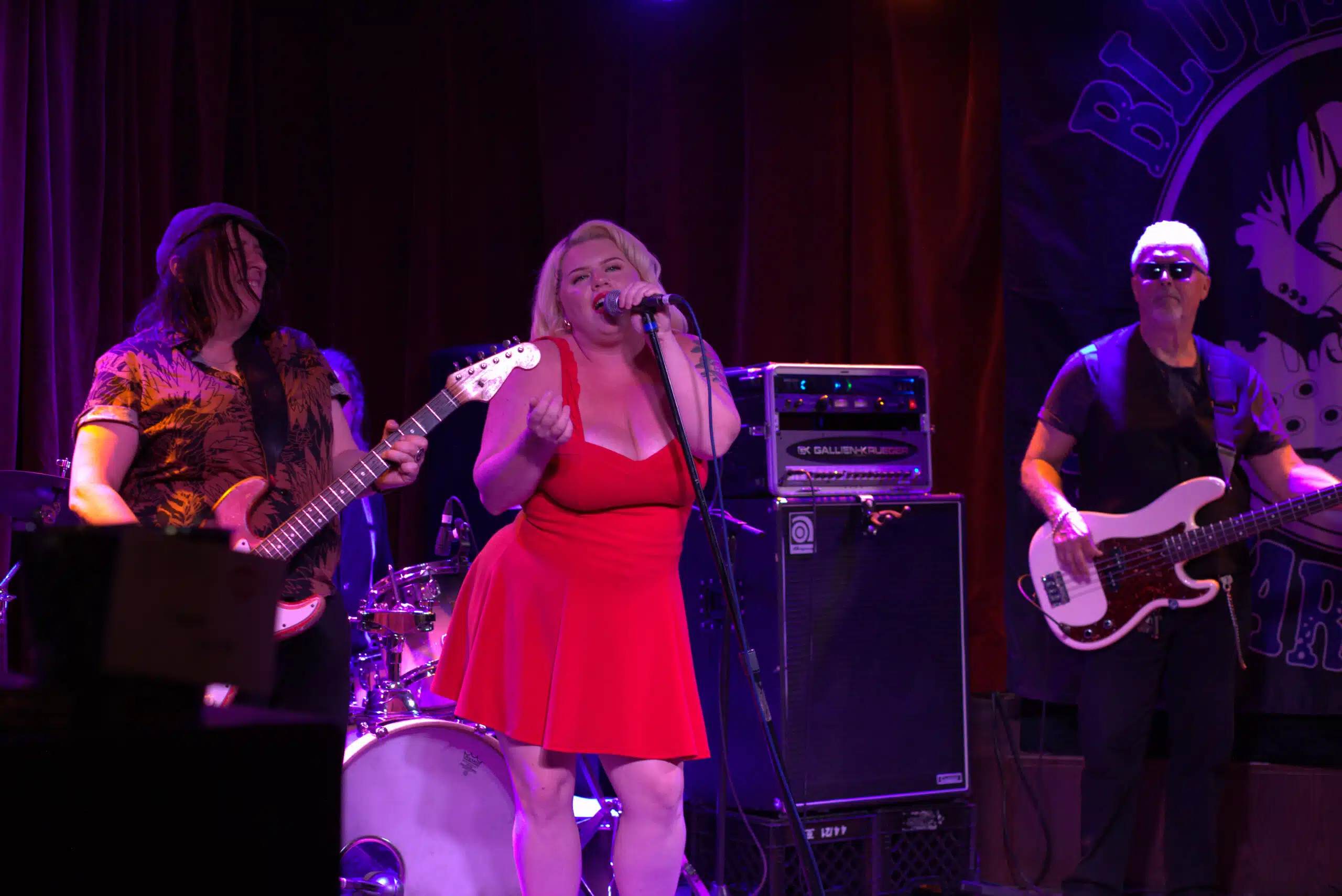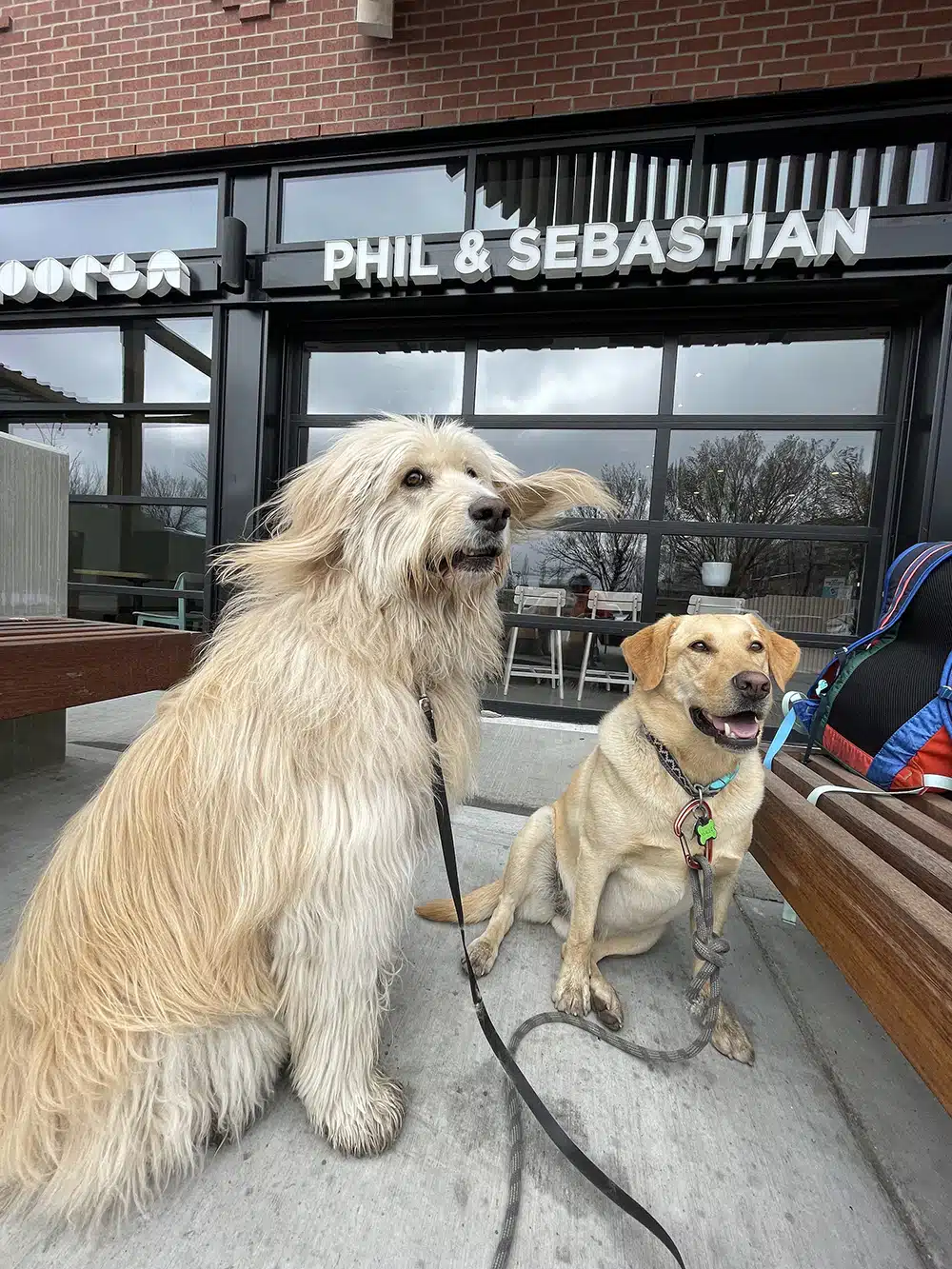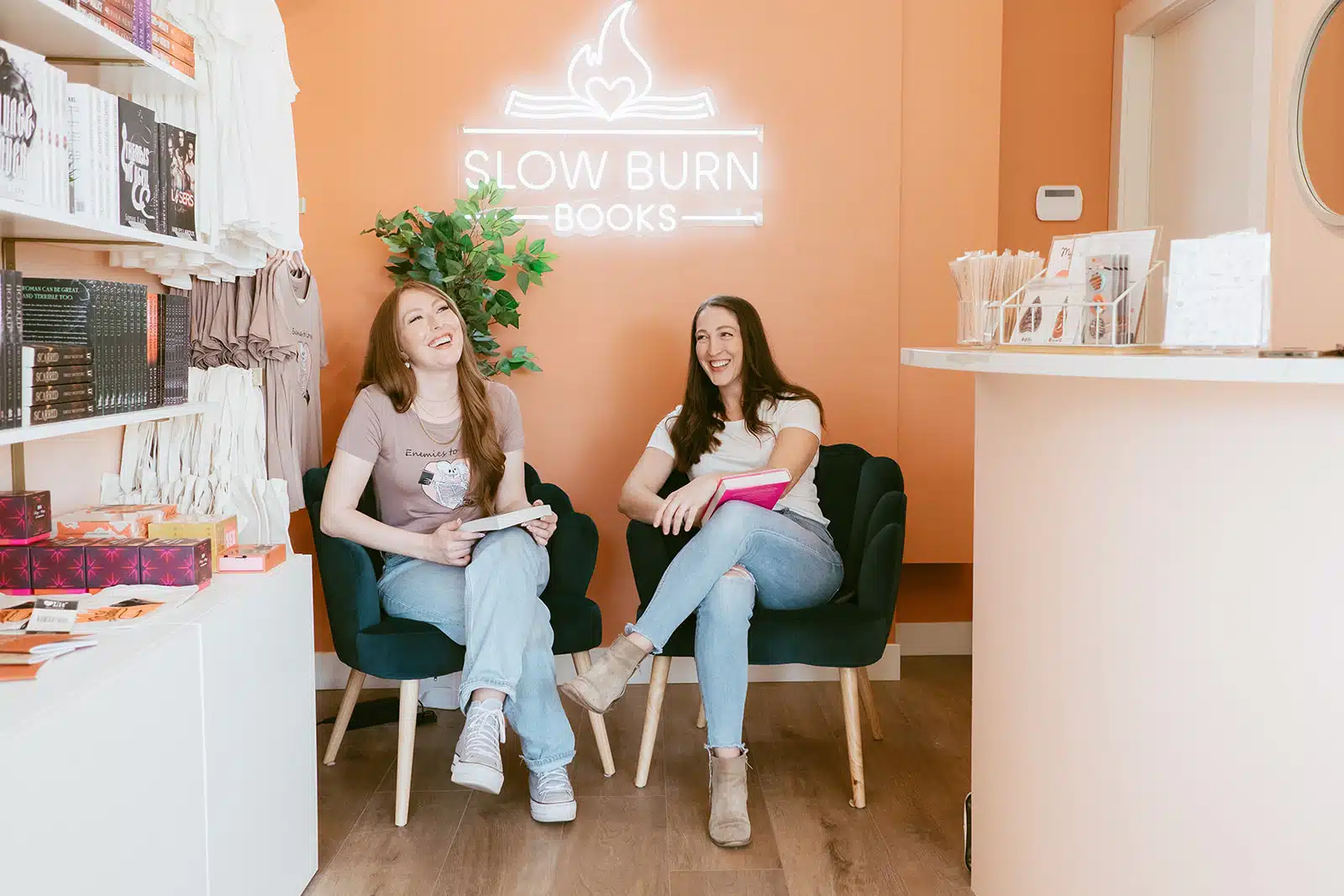It’s dark. If you are sighted, a blindfold sits across your eyes, blocking your vision, as you prepare to be immersed in Translations.
One of 10 dancers is assigned to you during the performance; 10 dancers for 10 audience members. You hear their breath as they move. You listen as they describe what they are doing. A soloist takes centre stage, and your assigned dancer traces the soloist’s movements along your back.
A dance show for the non-visual senses, which was created with visually impaired audience members in mind, Translations was performed at Inside Out Theatre as part of Springboard Performance’s Fluid Festival last fall. Inclusive programming is but one of the ways the company honours its mandate to remove barriers for deaf and disabled audience members.
“Accessibility is intentional. So much of our world has been inaccessible for quite a long time, in so many ways, that it has become the water that we swim in, and we’re not really noticing it,” says Col Cseke, artistic and executive director at Inside Out Theatre. Cseke adds that inaccessibility awareness is only part of the equation, with intentionality extending to thoughtfully removing barriers.
“And those barriers come up in a few ways,” says Cseke. “Part of it, especially for our deaf community, is the language barrier.” For many folks who are hard of hearing, American Sign Language is their primary language. “Without that ASL interpretation service, those shows are fundamentally inaccessible,” adds Cseke.
Indeed, new technology at Arts Commons has helped the organization break down barriers for hearing-impaired audiences as well. This past year, Arts Commons launched its Sennheiser MobileConnect+ program, which enables individuals with cochlear implants or Bluetooth hearing devices to connect to the building’s WiFi. Subsequently, performances are amplified directly in a hearing-impaired audience member’s device. The technology can also provide performance translations and, through scanning QR codes, share information about the various visual art exhibits throughout the space.
Freedom of Movement
Yet, with the Arts Commons Transformation (ACT) expansion project breaking ground last December, greater accessibility for hearing-impaired audiences will not be the building’s only advancement.
“The truth of the matter is, we’re dealing with a 40-year-old facility where if you are a patron, an artist, or working back of the house, you may not be able to get around as easily as we would want you to,” says Alex Sarian, President and CEO at Arts Commons. Upon the expansion’s completion, Arts Commons

will not only be more physically accessible, but the space will also be more inviting.
Featuring a naturally lit, glass-enclosed lobby, the updated building will host space for Calgarians to gather and drink coffee, view indoor buskers, and people-watch. One of the two new theatres, a 200-seat space, will have the capability to open up onto the rejuvenated Olympic Plaza, creating a flow of indoor and outdoor activity.
Accessible flow of movement is at the forefront of Inside Out’s new space, The Erratics Indie Arts Club, which opened last September. This summer, the venue will undergo renovations to ensure the entire space is accessible — both physically, and inclusively for the range of community partners that work out of Inside Out.
“We’ve been thinking a lot about how to make sure that the really diverse set of our community members and our collaborators are going to feel comfortable,” says Cseke, adding that Inside Out is endeavouring to both create an accessible, affordable arts venue for their community and a space that’s “not too precious.”
“We need to be comfortable for other folks to be comfortable,” he says.
Building Inclusivity
This sentiment is echoed by Bethel Afework, Executive Director at The Alcove Centre for the Arts. A completely free to use recreational arts space, Alcove’s open-door policy means anyone can come in and experiment with free art supplies and instruments. The organization also hosts workshops and community events, like jam sessions and Raw Voices — a comedy, spoken word and music show.
Afework notes that while there are improvements she hopes to make to Alcove — like offering an ASL translator — one way the centre excels at being accessible is through its built environment.
“When you come in, [you see] couches, colourful carpets and soft floor seating. The idea was to make it feel like someone’s living room,” says Afework. “It feels a little DIY, like it’s okay to make mistakes in here.”
Using the built environment to encourage inclusion will likewise be integrated into Arts Commons’ renewed space. “There’s an element of the building, not just in terms of its design, but in terms of the flow, that is really about democratizing access and decolonizing these institutions to make sure that they are welcoming,” says Sarian.
Notably, the ACT project has partnered with Wanda Dalla Costa — Canada’s first female First Nations architect and member of the Saddle Lake First Nation — to integrate design elements that honour Western Canadian Indigenous communities. For instance, one aspect of the design is a celebration of lodge building in Western Canadian Indigenous communities, and another design integration highlights a beautiful green wall inspired by Indigenous quillwork.
“This building will be beautiful no matter who you are or where you come from, but should you happen to be a member of the First Nation in Treaty 7, and certainly beyond, you will see things in this facility that nobody else will see,” says Sarian. “It’s this beautiful homage to who we are and what land we’re on.”
Returning to Roots
At Alcove, decolonizing the arts extends beyond design and into the centre’s ethos of breaking down barriers between audience and artist, stripping art back down to its roots as a fundamental part of the human experience.
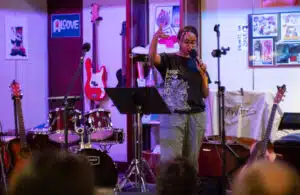
“Art just feels so privatized or gate-kept. Like something you can experience, but if you’re not an artist, it’s not something you necessarily might actively practice,” says Afework, adding that for herself and the other founders at Alcove, dancing, singing, and storytelling are a natural part of their cultures.
“It was such a natural part of life. But in colonial societies, that was definitely stripped away for the means of capitalism, and art became this thing for the elites to enjoy,” she says. “Art is the one thing that’s so important to decolonize because it is the roots of human history that connected us. It’s important to decolonize art because it is important to decolonize all spaces.”
“There are barriers existing in the way that we’ve adopted a very formal, European style of audience-going based on decorum and deference,” adds Cseke, explaining that in a typical theatre setting, audience members are required to sit still and silently in the dark for a couple of hours.
“That’s just not physically possible for a lot of folks,” he adds. As a solution and means of inclusion, Inside Out Theatre offers relaxed performances. Geared toward audience members who may be easily overstimulated or uncomfortable in a traditional theatre performance, relaxed performances tone down what is happening on stage — and also relax traditional theatre-going rules.
“If you need to make a little noise, if you need to leave for a little bit and come back in, that’s okay. Whatever you have to do to be here, we’re not gonna shush you. We’re not gonna paint you as disrespectful. We’re gonna appreciate that you’re here with us,” says Cseke.
Shifting Power
Creating a safe space where audience members can engage with a performance outside of a Euro-centric structure also reduces cultural barriers. At Chromatic Theatre, Artistic Director Kodie Rollan saw the opportunity to host Brown Out Nights and create affinity spaces for BIPOC audiences.
A performance company that develops, supports, and creates space for racialized theatre artists in Calgary, Chromatic has produced a couple of shows in its 2024 season that also included a Brown Out Night, Kisapmata by Filipino playwright Bianca Miranda, and Static by Latinx artist Ashley King.
Brown Out Nights are a performance specifically for members of the BIPOC community to gather. Particularly, the Brown Out nights hosted via Chromatic were geared towards the cultural groups represented in Kisapmata and Static. While not exclusionary, Brown Out Nights do invite folks who are not part of the BIPOC community to consider why they should attend.
“Theatre, historically, hasn’t been fully inclusive of different communities, whether that is purposefully or not purposefully. From a racialized community perspective, it’s an opportunity for us to feel comfortable in this space with other fellow racialized community members,” says Rollan. He notes that while Brown Out Nights have been controversial as some folks feel excluded, a Brown Out Night is typically only one evening in an 11-show run.
“A Brown Out Night is a beautiful opportunity to shift power into the hands of racialized folks and to forefront a lot of their own cultural norms,” he says, adding he hopes to spark a mindset shift towards abundant opportunities instead of a feeling of lack.
Indeed, this concept of abundance as a byproduct of nurturing care in the arts is central to Rollan’s ethos at Chromatic — including how the company interacts with its audiences. As a relatively small theatre company, Chromatic generally rents spaces and/or collaborates with larger arts groups. Being creatively nomadic can pose problems when it comes to physical accessibility. Top of mind for Rollan are concerns like ensuring their venues have accessible washrooms, as well as parking and transit availability — while also ensuring that accessibility information is available to ticket-buyers on Chromatic’s website and through integrating accessibility coordinators at their shows.
One facet of accessibility Rollan can control is pricing. To keep their shows financially feasible, Chromatic Theatre offers two pricing tiers: general tickets ranging from $20 to $25 and discounted tickets ranging from $10 to $15 for students and seniors. Inside Out provides a choose-your-price option, with tickets at $15, $30, and $45. Purchasers choose the ticket price that best suits their budget and ability to contribute.
Bridging Generations
Cost is a barrier the BLOX Arts Centre seeks to overcome as well.
An all-ages music and arts venue, the BLOX operates with The Beltline BIA (Business Improvement Area). The arts centre often hosts entry-by-donation shows, $5 Rockin 4 Dollar$ performances, and shows where the bands set the ticket price.
Along with ensuring the one-level space is fully physically accessible — including gender-neutral, accessible washrooms, ramps and wide hallways — The Blox reduces barriers for young people and families to partake in Calgary’s live music scene.
“[Young people] need to have opportunities and places where they can go, be creative, express themselves, and feel included and safe,” says Katie Theis, Executive Director at the BLOX, adding that since the BLOX is licensed as a venue and not a bar, children and teens can be there any time of day — or night.
“We have a zero-tolerance policy for bullying and harassment, and we do have security that enforces it because we want to make sure that people who are sometimes underrepresented, like young people and the LGBTQ community, are all welcome, and they’re all safe,” adds Theis.
Another arts organization seeking to provide spaces for families to enjoy the arts is Calgary Opera, which offers Serious Family Fun afternoon performances that invite all ages to enjoy music, storytime, visual arts and even dress-up. These performances are one way Calgary Opera seeks to engage with a broader audience — as well as performing popularized operas like The Barber of Seville, shows geared towards younger audiences like Little Red Riding Hood, offering Sunday matinees, and integrating relaxed performances.
Calgary Opera is also reducing social isolation through its Opera Buddies program, which is in partnership with McDougall United Church. The program connects youth with seniors over four sessions. Together, the different generations learn about opera, attend a dress rehearsal, and discuss what they have learned.
“I believe that the purpose of opera is to create a more connected, caring and civil society,” says Sue Elliott, General Director and CEO at the Calgary Opera. “I think that’s needed now more than ever, as social media and the Digital Age has actually increased social isolation and the polarization of opinions.”
Cseke echoes that the arts have the power to bring people together.
“When you go to a live show, you don’t know who else has bought a ticket, and you don’t know who else you’re going to be sitting next to,” he says. “As we’re increasingly divided as a city, going to a big room full of folks that you don’t know is really meaningful.”

